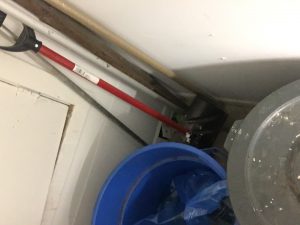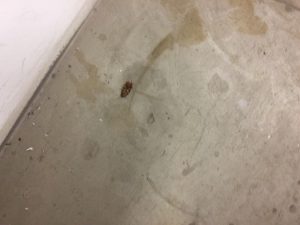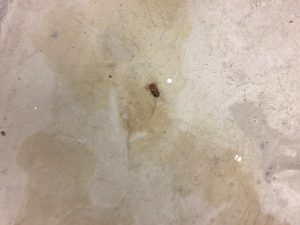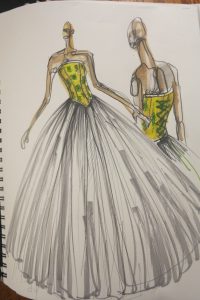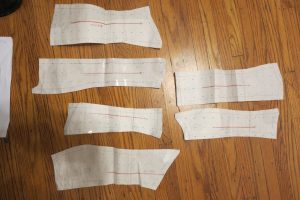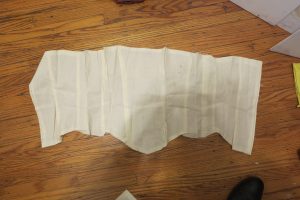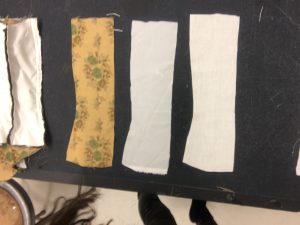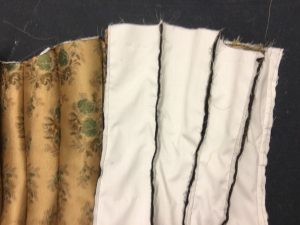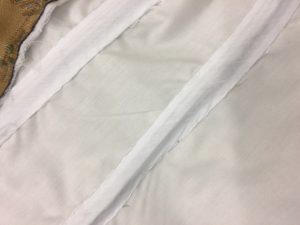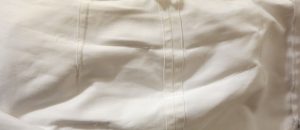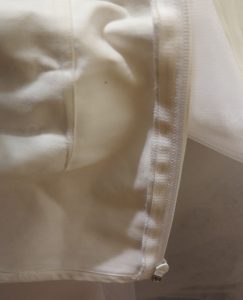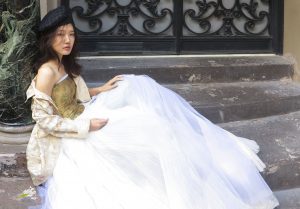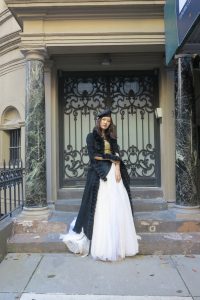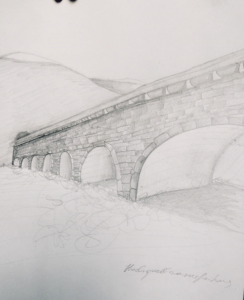COCKROACHES: Urban Ecology Field Study
Antonia Groh
Sustainable Systems
They are red-brown, have six strong legs with hair, long feelers and can run very fast. In the list of unpopular animals, cockroaches are likely to occupy a top spot, especially in New York, where they are a nuisance of everyday life like the rats in the underground tunnels.
“They are a bit disgusting,” says Mark Stoeckle, who is a researcher at the Rockefeller University in New York. He has made it his mission to undertake research upon the animal, in particular, the American cockroach, also know as Periplaneta americana, which does not bear its name in vain, as it can be great in size as four inches, and that is not counting the antennas.
Furthermore, he launched the ‘National Cockroach Project’ asking people to collect the cockroaches from their own homes or sidewalks or any other place, then send them to New York, even dead, if necessary, so that Stoeckle can research the animal. Since then, cockroaches have been sent by post to his laboratory from all over the country.
So far, when researching cockroaches myself, it is evident that there is rather little research on the animal, not even regarding the world’s most common species, the American cockroach. However, I came across some rather unique experiments, using cockroaches, for research purposes. An example, tests regarding a cockroaches species level. Scientists in California, have undertaken the research of letting some cockroaches run free in their lab, which then resulted in measurements of the animal, which were rather astonishing. Results showed that the top ‘cockroach – speed’ was impressive 5.4 kilometers per hour. This may not sound like a lot, yet one has to consider that, according to the scientists, this is about 50 times their body length per second.
Most common species:
•American Cockroach aka. Periplaneta americana.
•Brown-Banded Cockroach aka. Supella longipalpa.
•German Cockroach aka. Blattella germanica.
•Madagascar Hissing Cockroach aka. Gromphadorhina portentosa.
•Oriental Cockroach aka. Blatta orientalis.
•Smokybrown Cockroach aka. Periplaneta fuliginosa.
However I will be focusing on the American Cockroach aka. Periplaneta americana, as it is the most commonly found cockroach in new york city, along side the German Cockroach aka. Blattella germanica.
Starting my project, I felt it was surprisingly difficult to find cockroaches around my environment, particularly to actually observe the animal, as they are very fast, and whenever I found a specimen on the street the cockroach ran away from me. This resulted in me running the streets of new york, chasing little cockroaches. I wanted to take images of the animal, yet due to my motion the picture was not very useful, hence I relocated. I researched further regarding the occurrences of cockroaches at home, by this I mean indoor spaces. I learned that the animals seem to be drawn to washers and driers as well as dish washing machines, as these are sources of warmth and often food, particularly the later. Hence I started to look for cockroaches within my building. I observed the back of my in unit dishwasher, yet there were no animals to be found. Then I had an idea. I asked my landlord if we had a cellar, where trash or something of that sort was being held, as I assumed this would be a ‘cockroach Mecca’. Indeed my house had a cellar, which usually was not usable for renters, as apparently it was under construction. Luckily however, after explaining my project and the necessary need to revisit this cellar, my landlord was kind enough to allow me to do my research once every weekend. Furthermore, I started of documenting the darkest corners of the room, in which I was expecting to encounter a cockroach.
Additionally, I was faithful, that I would see many cockroaches here over time, as the weekly trash was being summoned here, which is a great food source for the animals. As I looked around the cellar I also noticed that there was a washer and drier which seem to have been installed, due to the renovation purposes, which are also cockroach magnets so I was very excited. During my first observation, I did however, not see any cockroaches yet, hence I secretly hid some food in one of the corners of the washer, to attract the animal. Thus I did research both outside (near trash on the street and street corners) as well as in the cellar for my urban ecology project.
The cellar:
Week one:
When keeping an open eye for cockroaches on the street, I found that there are two main types of cockroaches wondering the streets of New York City. I saw mainly one which seemed to be between one and two inches in size and light brown, with a quite slender bodice, as well as another, not as frequently seen cockroach, which looked as if they had stripes on its back, and sometimes fly very short distances, which scared me the first time I saw this, as it was not expected. I researched which species the two cockroaches are I tend so see, and in deed I identified them as the German and American cockroach as my previous research had told me.
I am intrigued whether I will see another species over the life spans of this project, as well as if I do, whether this has to do with particular parts of the city. By that I mean whether or not I tend to encounter specific specimens more frequently in a particular part of the city. I personally life on the upper east side, where the streets tend to be very clean, hence I have not had as many ‘sightings’ around this area. However, in front of restaurants, which I assume have more food within their trash, I dis see cockroaches more frequently. Furthermore, I am interested whether or not as we move towards winter time, I will see more cockroaches in the cellar rather then the streets. Im assuming that this will most likely be the case, but I am exited to see whether this will actually be the case.
September 15th 17
I saw 3 cockroaches today. One near the new school, next to bubbleology, the cockroach looked like Blattella germanica, but was rather small in size which made me curious. The animal seemed to just sit there and relax, but then hastily ran toward a piece of trash on the side of a pizza place near by. (approximately 20 meters). I followed the cockroach but lost sight as it dove into the trash can.
The other two sightings were on my way home in the subway station. Specimen one by the ticket automat and specimen two (which actually turned out to be two cockroaches) by the stairs down to the L train.
I am curious whether the amount of cockroaches I will see in the subway will be greater as the months get colder as the ‘subway climate’ is rater warm.
September 16th 17
I visited the cellar today, checking weather or not my ‘food trap’ had attracted any more cockroaches. In deed they seem to have nibbled on my food trap, yet I did not see any specimens around it. I continued to look through the area, especially around the trash and washer, drier area. As I did so I shortly glanced a Periplaneta americana, I think. It was hard to tell as the cockroach continued to run away from me. But I am pretty certain it was an American cockroach, due to its size and color.
However even after spending some time down at the cellar looking for more cockroaches I did not see many more today.
On the streets I also did not seem to see many specimens today, except for one again close to the pizza place near school, yet today seems to be a rather ‘cockroach less’ day. I wonder whether it has something to do with today’s climate.
September 20th 17
Today was a day of ‘cockroach families’, I think I have never seen so many cockroaches in one day in the entirety of my life. I had a free day today, hence I decided to go to Brooklyn and go on a cockroach hunt. I took the subway all the way until I arrived in Park slope. On my journey I encountered many cockroaches, they all seemed to be Periplaneta americana, but most likely there were some Blattella germanica evident as well, yet it was hard to tell as many people were running around the subway so it was challenging to keep up with the fast cockroaches, as people kept on standing in my way. Yet I managed to observe a ‘cockroach family’ by the corner of one of the seating places. It was a group of four cockroaches, which seemed to follow one another. They did not move to much, rather seemed as if they were seeking shelter. One of them then continued to venture towards the elevator, yet I saw the same cockroach come back to its ‘family’ again after a minute or so (assuming it was the same specimen). Then my train arrived so I had to leave.
On the train itself there were no cockroaches. When I arrived in park slope, I made sure to look particularly around areas where there were restaurants, as I noticed earlier in my process that in manhatten, the cockroaches tend to be evident around restaurant trash more frequently. Indeed I saw a view specimens around the area of a trash bag by a breakfast place near by 5th ave and 88th street in brooklyn.
September 23nd 17
The next weekend has arrived, meaning I can check the cellar. Upon checking and observing my usual ‘cellar route’ – washer driere, then trash then creases and corners, I did not see a change in frequency of cockroach sightings. However, I did find a dead cockroach.
September 28th 17-
No sightings today.
October 7th 17
Today was the day where I again looked at the cellar, and I discovered that there is a door that leads to an out door area, which seems to be where even more trash is held until the garbage workers pick it up. This was exciting as I saw 4 cockroaches run free in this area, particularly one was climbing up one of the walls, which was my neighboring house. This made me think that maybe there must be a good food source there, or it must be warm and cozy for the cockroaches. Particularly as the house has a coffee shop on its ground level which would add up. The specimens I saw again were identifiable as Blattella germanica, due to color and size.
October 9th 17-
No particular specimen sightings today so far, I was around the area of the lang building today for classes, yet this area seems to be rather clean as I did not encounter any cockroaches today. Maybe I will see some later on in the day.
October 9th 17 (later)
I saw one cockroach! It was near the steps when I exited the subway at hunter college. It looked like Supella longipalpa which is very exciting as I had not seen this species before on my sightings at all. I am curious whether this has anything to do with it being October now and slowly breaking into the colder months? However, the cockroach fleet from me rather quickly, yet I will return to this subway station again and look if I see it again or one of its kind. (I called him Fred)
October 14th 17-
Today I went back into the cellar, and again I found two dead cockroaches, I am not sure what keeps killing them, I really hope it was not the food I left. The specimens were smaller in size then the one I found last time, which was interesting to observe.
I saw one other Periplaneta americana but nothing out of the ordinary.
October 18th 17-
Again not many sightings of specimens today, I returned to hunter college where I saw Supella longipalpa (aka Fred) but I unfortunately did not see one of this kind again. I remained around the area for quite some time just observing the floor, whether or not I would see cockroaches. Unfortunately I did not, yet I saw 4 specimens by the side of the street walking on 68th street between park ave and lexington ave. I think it was due to the construction that was gaining on there, as that means shelter. Also I assume that the worker will have some food there, such as sandwiches or such, meaning the excess that falls to the floor could be savored as food for the cockroaches. However that was all the cockroaches I saw today. I have noticed that I have been seeing the animals more in ‘families’ lately of 3 or 5, mostly not sure how this is occurring. Yet maybe it has to do with winter comping and the specimens creating survival groups, such as ants have their tribes. But this is simply a thought, I could not find reliable proof for this when researching.
October 22nd 17
I saw another cockroach family today, on the 5 line subway. They were gathered around the stairs, similar to the one in my previous post regarding the L train. (Post on September 15th 2017) Yet rather then sticking together they quickly split up. I noticed one specimen running of towards the other stairs and another one, both seemed to be Periplaneta americana, made its way to the tracks. I followed the one that went down the tracks, by standing by the edge and observed that it seemed to crawl over the tracks effortlessly, then it disappeared. ( I assume it went underneath one of the tracks or on the side where I could not see it anymore. )
Also I checked the cellar again today, I have noticed more cockroaches then usual I as a total of 3 cockroaches inside. One was near washer and two were by the garbage cans. The door to the outside was locked this time.
October 28th 17
I was around Chelsea piers today, observing if I see more cockroaches here. I saw quite a view specimens around the area where the bowling alley is. I saw one Periplaneta americana running around there and another 2 by the dumpster close by. I also looked into the dumpster, yet it was filled up with trash and hence it was difficult to see any other cockroaches.
On my way back to the upper east side, I strolled through Chelsea and notices that some cockroaches were visible rather frequently dissapearing into the water sewage systems (the holes in the ground). Other then that no unusual sightings unfortunately.
November 1st 17
I returned to hunter college today where I saw Supella longipalpa (aka Fred) because I was curious if I would see the species again, after my failed attempt the last time. So I sat down close by and watched the floor again, waiting to see specimens. I again did not see the Supella longipalpa (aka Fred) yet I did see quite a view Blattella germanica and Periplaneta americana particularly by the edge of the street where a hot dog stand was serving food.
November 8th 17
I walked around in central park today again, looking for any changes from the last time I went there to look for cockroaches, yet I did not see any specimens. However, once I approached areas which were full of trash cans they seemed to appear more commonly. The examples I observed were mostly Blattella germanica and a few Periplaneta american. What was surprising to me, was that here the specimens did not seem to be found in “families” such as in the subway and by the streets.
November 11th 17
I visited the cellar again. I found a new dead cockroach this time it was really tiny and I belive it was Blattella germanica. Also another cockroach escaped me and run behind one of the trash cans. I noticed that over time I have seen more cockroaches rather large in size alive and smaller specimens dead. This may be due to winter having an impact on their food I suppose.
November 14th 17
Today I saw two cockroaches by the Pizza place near the new school, they ran across the street. Hence I only glimpsed at them for a short moment, yet I believe I saw Periplaneta American due to their color and sizing. No other sightings today.
November 18th 17
I have returned to the cellar, and there were a preponderance of dead cockroaches. They have significantly increased since last time I was here. Instead of the usual 1 to 2 dead specimens, this time there were 6! I assumed that throughout the process of winter approaching and our weather climate becoming colder more specimens would retreat into the cellar, however I was not thinking it would happen so abruptly. So this was interesting to notice. I will continue to observe whether they keep multiplying at this speed or if this was an exception. Moreover, the cockroaches I could observe were mostly Periplaneta American.
November 21st 17
I saw a cockroach family grouping today again. They seem to have been occurring more frequently again, particularly near subways, as I had noticed earlier on in my observation. I have seen an increasing amount near location which seem to be a shelter for the cockroaches (subway, restaurants etc.)
November 25th 17
Today I went back into the celler to observe if thee have been changes (greater occurence of cockroaches) – in deed they increased in amount. However it was not as great of an incline as last time. (only 2 more rather then 5) Other then that, no specific changes.
The specimins again were Periplaneta American and 3 Blattella germanica.
November 28th 17
No sightings today so far. I shall observe more as the day goes by.
November 28th 17
Still no sightings, which is unusual.
November 29th and 30th 17
I have noticed that less and less cockroaches are seen on the street, and they increased much more in subway station. I assume that is due to the cold weather changes, as I predicted earlier in the observation project. However, I thought it is surprising that this happened rather abruptly and that they are seen much more rarely now. I will continue to observe and also look at other areas (now I have seen this mostly around the upper east side and around the new school area) I will go to central park and see if it is different there. (more cockroach sightings)
December 2nd 17
I went back into the cellar today to see if anything changed, and indeed this time I saw almost 6 cockroaches. Two were running around so I only saw them briefly until one disappeared under a door and the other one into the trash. However, the other four were dead on the floor. I now am rather convinced that the temperature has motivated the specemens to accumulate in the warm cellar more and more as the numbers of cockroaches I see here has skyrocketed.
December 6th 17
I went to Central Park today and looked around wether I saw some specemins. I did indeed see a view examples of Periplaneta americana. They were mostly near to the trash cans. However I also saw one run around a food truck. Exciting however was that when visiting central park, I saw Supella longipalpa which I had not seen before. I think it was Supella longipalpa because of the brown black colouring of the specemin. I saw this cockroach close to a food stand by some food that had been left behind next to some old trash. I tried to take a picture but unfortunately I was not fast enough and one could not see anything on the picture.

